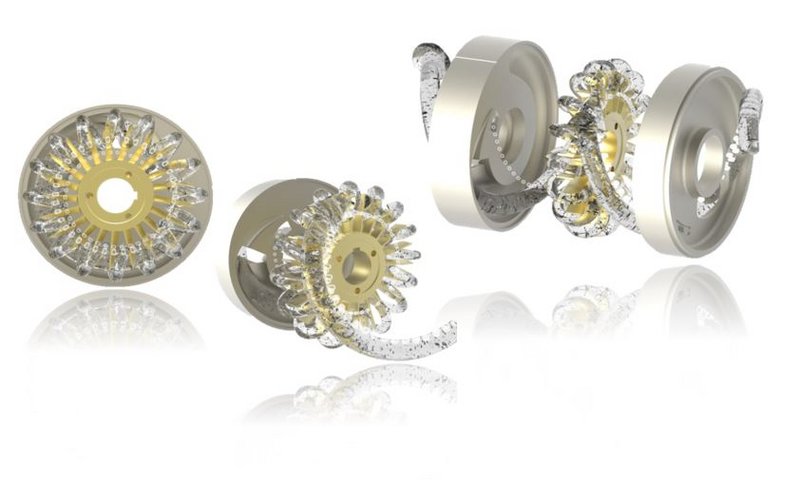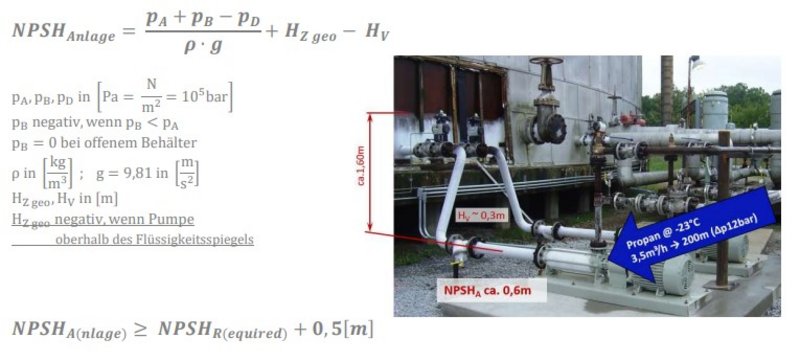The pumped liquid or liquid-gas mixture first enters the impeller cells and the side channel through the suction opening. The side channel does not extend over the full circumference here, but is interrupted at one point. Due to the rotary motion of the impeller and the centrifugal effect, the pumped liquid has to circulate back and forth several times between the cells of the star-shaped impeller and the side channel, while a circular flow direction is superimposed by the rotation of the impeller. This results in the typical circular-helix flow lines on which the pumped liquid moves through the side channel stages. Due to the multiple interaction of the pumped liquid with the impeller, a very intensive energy transfer occurs.
With side channel pumps, delivery heads (i.e. pressure increases) can be achieved which are 8 to 9 times higher than those of conventional centrifugal pump impellers rotating at the same circumferential speed - with the same impeller diameter. At the end of the side channel, the pumped liquid is led into the discharge port and into the next stage or the discharge nozzle of the pump. A partial flow is led back to the suction side through the interrupter, in which the radial and axial operating gaps are minimized. The impeller blades passing through the area of the interrupter act here as a dynamic seal between the discharge and suction sides of the side channel stage. The minimum operating speed should not fall below 900min-1.

